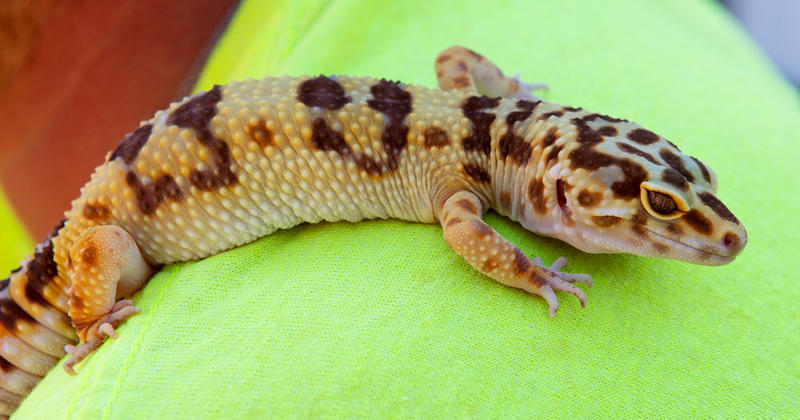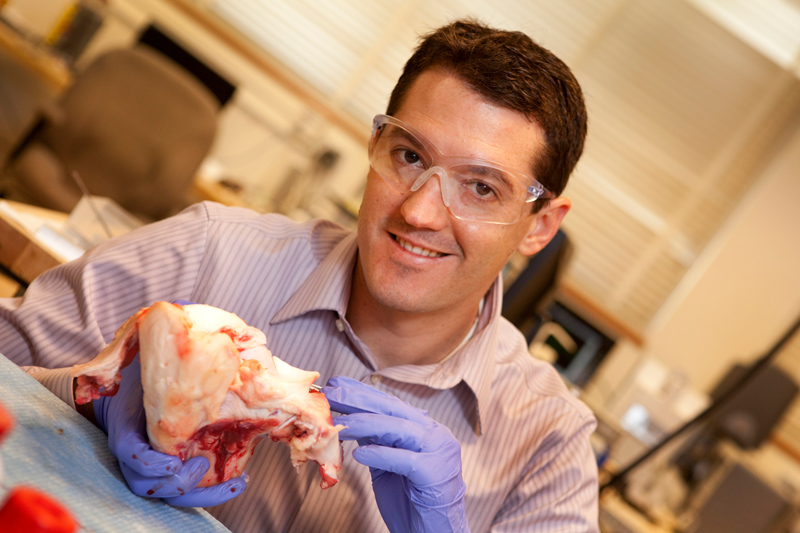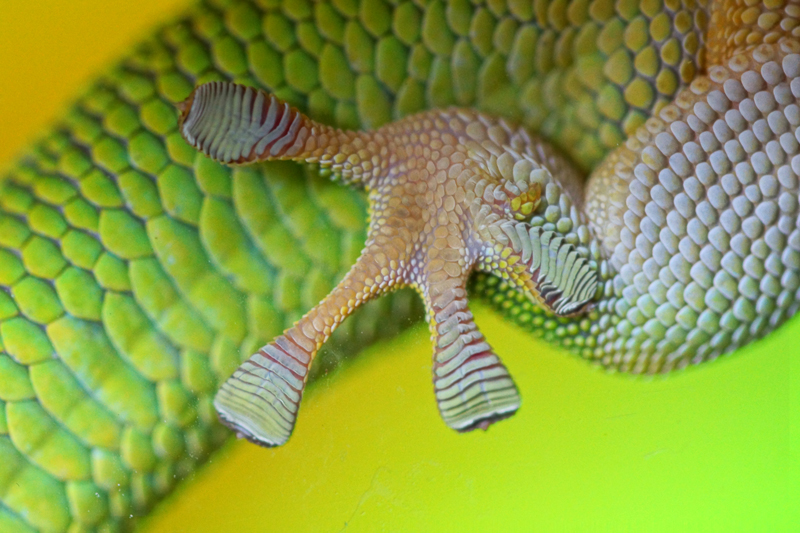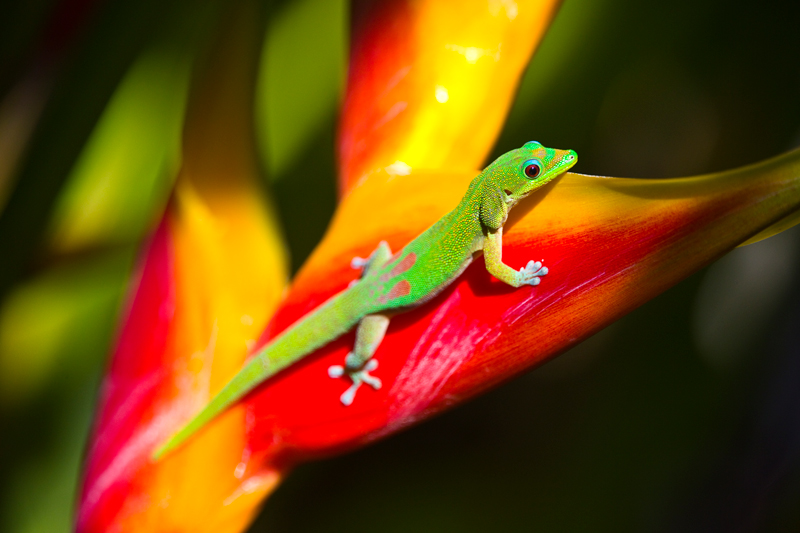


Gecko stickiness
Photos by Kathy F. Atkinson, iStock and courtesy of David Burris June 24, 2020
UD researcher explores connection between human cartilage and the famous lizard
When people consider the humble gecko (assuming people consider the gecko at all), it’s likely car insurance that comes to mind. But these colorful little lizards do more for humans than animate TV commercials. In recent years, the sticky toes of this reptile have inspired the creation of everything from next-generation Velcro to Super Man-style suits that aid U.S. military personnel in scaling walls.
Now, these sticky feet are also informing important research into the inner workings of human cartilage. This is significant, because cartilage has always been a mysterious substance, keeping scientists awake at night for nearly a century.
“There’s nothing else in the world like it,” said David Burris, associate professor of mechanical engineering at the University of Delaware and principal investigator in UD’s Materials Tribology Laboratory. “It’s an extraordinary material. We’ve been studying it since the 1930s, and we still don’t know how it does what it does.”

But, thanks to the efforts of Burris and his team, we’re getting one step closer to solving the puzzle. Which means we’re one step closer to engineering a class of superior synthetic joints that are almost as good as the real thing.
Before one can understand how Burris’s research is helping, it’s important to know what cartilage is: a tough, flexible and fluid-filled tissue that cushions the area between bones and keeps them from grinding against one another. Reducing this friction is key to maintaining the joints and avoiding conditions like osteoarthritis, a disorder that limits the mobility of 60 million Americans. Without cartilage, “you’re not walking,” Burris said. “You’re in tremendous pain.”
The research community has long understood that lubricating the joints is key to cartilage’s friction-reducing function. But how, exactly, this material achieves lubrication has been a matter of great scientific interest and debate. One school of thought? Friction is low because of a thin layer of synovial fluid between cartilage surfaces in the joint – fluid that keeps these surfaces from touching.
But this doesn’t explain one of cartilage’s more head-scratching characteristics. It’s sticky. Like, really sticky. Yet, it’s able to slide in the joint, allowing for full range of motion.
“Unusual properties don’t develop in nature for no reason,” Burris said. “The chance that an exceptionally lubricious material like cartilage also developed unusual adhesion by coincidence looks negligible to me. It has to be a critical part of the lubrication story that no one has looked into.”
Using a grant from the National Science Foundation awarded in 2019, Burris and his team have been doing exactly that, looking into cartilage’s sticky factor by building their own devices to take relevant measurements. What they’ve discovered? Cartilage sticks to other surfaces to the same degree that a gecko foot sticks to other surfaces – and the gecko foot is the gold-standard of unusually high adhesion in nature.

On the reptile’s toes, millions of microscopic hairs act as individual springs, conforming to – and sticking to – the wall of your house (or whatever surface the gecko is exploring) one at a time. The bumps on a rough piece of cartilage act similarly – they conform to an opposing cartilage surface one by one in the joint. This creates a tight seal between the surfaces, allowing different kinds of pressure to build. Negative pressure resists separation, while positive pressure supports the load of your weight on the joint and prevents water from leaking out. Hence: Lubrication.
This deep dive into the adhesion of cartilage challenges a conventional thought about the body — that intimate contact between surfaces is always a bad thing that will result in a gradual grinding down and wearing out of those surfaces. When it comes to cartilage, intimate contact is key to function.
“In a car engine, you have to keep surfaces separated in order to lubricate,” Burris said. “And you do so by running constantly at a couple thousand RPMs. We’re not constantly running; we’re not constantly moving our joints. We’re sitting around the vast majority of the time, so nature has come up with a completely different solution for lubrication.”
The tight suction between two pieces of cartilage, Burris discovered, is also responsible for another long standing mystery surrounding cartilage: cracking. That sound you hear when you crack your knuckles or another joint in the body? That’s the rupture of the interface when two very sticky cartilage surfaces are pulled apart.

“There have been so many hypotheses as to why joints crack,” Burris said. The surprising adhesion of cartilage — to itself and many others surfaces — gives a new and clean explanation.”
This research represents a breakthrough in a series of cartilage-related discoveries Burris’s lab has been making over the last 10 years — discoveries that may one day lead to better-engineered, longer-lasting joint replacements.
“It’s one of the pieces to the puzzle,” Burris said. “It’s going to get us away from the conventional wisdom about cartilage and joints and how they function. You have to build a strong case to change the way people think about these things, and this is a big part of building that case.”
Contact Us
Have a UDaily story idea?
Contact us at ocm@udel.edu
Members of the press
Contact us at 302-831-NEWS or visit the Media Relations website

